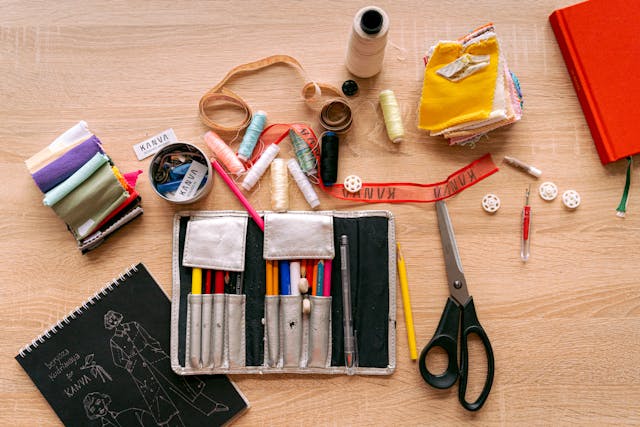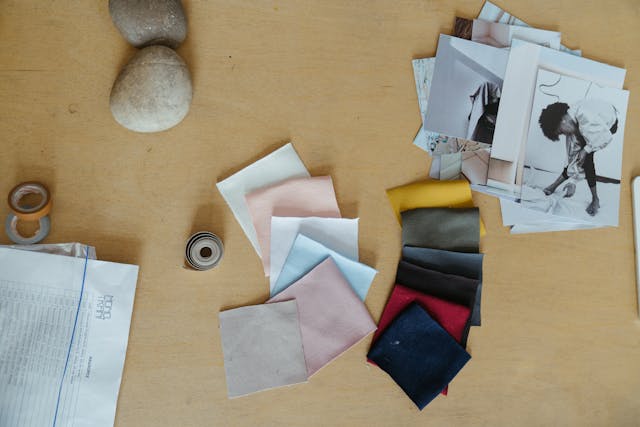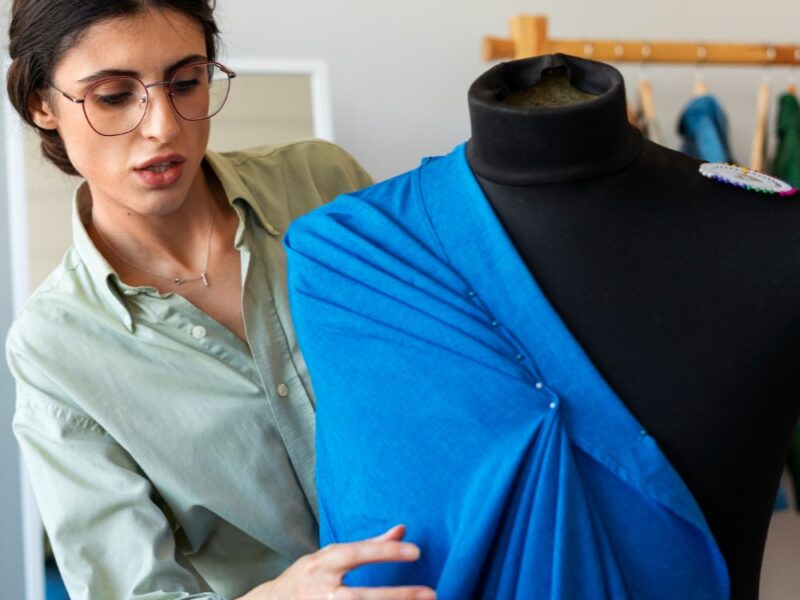Textiles, Pattern making and its tools in fashion studies…

Fashion Studies is an exciting field that blends creativity, technical skills, and industry knowledge. Fashion Studies is a broad and dynamic field that covers multiple aspects of the fashion industry, including design, textiles, garment construction, marketing, and merchandising. Here’s a detailed breakdown of its key components:
1. Overview of Fashion
- Definition and evolution of fashion.
- Factors influencing fashion trends.
- Fashion forecasting and cycles.
- Theories of fashion movement (trickle-down, trickle-across, etc.).
- Consumer segmentation in fashion.
2. Textile & Fabric Studies
- Classification of fibers (natural vs. synthetic).
- Yarn formation and weaving techniques.
- Dyeing and printing processes.
- Understanding fabric properties and their applications.
3. Design Fundamentals
- Elements of design (color, texture, shape, etc.).
- Fashion illustration and sketching.
- Haute couture vs. ready-to-wear fashion.
- Influence of cultural and historical fashion movements.
4. Garment Construction
- Pattern-making techniques.
- Sewing methods and garment assembly.
- Fit evaluation and alterations.
- Understanding different types of clothing structures.
5. Fashion Marketing & Merchandising
- Branding and retail management.
- Consumer behaviour and purchasing patterns.
- Role of fashion professionals in merchandising.
- International trade and regulatory bodies in fashion.
6. Industry Exposure & Career Opportunities
- Internships, fashion shows, and exhibitions.
- Careers in fashion design, textile design, retail management, and luxury brands.
- Emerging trends in sustainable fashion and ethical production.
Fashion Studies is an exciting field that blends creativity with technical expertise. If you’re interested in pursuing it academically, various institutions offer specialised courses that provide both theoretical and practical knowledge.
Textiles in Fashion Studies :

Textiles are crucial in fashion studies, influencing design, functionality, and sustainability. They encompass fibers, yarns, fabrics, and various processes that shape the final garment.
Key Aspects of Textiles in Fashion Studies
- Fiber Types – Natural fibers (cotton, wool, silk) vs. synthetic fibers (polyester, nylon, acrylic).
- Yarn Construction – Twisting fibers to create different textures and strengths.
- Fabric Formation – Weaving, knitting, and non-woven techniques.
- Dyeing & Printing – Methods to add color and patterns to textiles.
- Textile Science – Understanding fabric properties like breathability, durability, and elasticity.
- Sustainable Textiles – Eco-friendly materials and ethical production practices.
Textile science is deeply integrated into fashion design, helping designers choose the right materials for aesthetics and functionality. Selecting the right textile is crucial for ensuring your pattern translates effectively into a well-fitting garment. Here are some key factors to consider:
1. Fabric Weight & Drape
- Lightweight fabrics like chiffon and cotton voile create fluid and soft designs.
- Medium-weight fabrics, such as linen and denim, provide structure.
- Heavy-weight fabrics, like wool and canvas, offer durability and warmth.
2. Stretch & Flexibility
- Knitted fabrics like jersey and spandex allow for flexibility and movement.
- Woven fabrics, like cotton poplin or silk satin, provide stability but less stretch.
- Consider fabric recovery—how well the textile retains its original shape after being stretched.
3. Texture & Surface Finish
- Matte fabrics (e.g., cotton, wool) create subtle elegance.
- Glossy fabrics (e.g., silk, satin) add luxury and vibrance.
- Textured fabrics (e.g., corduroy, velvet) bring depth and complexity to designs.
4. Durability & Ease of Maintenance
- Synthetic fabrics tend to be more durable and wrinkle-resistant.
- Natural fabrics may require special care (e.g., dry cleaning for silk, shrinking risk with cotton).
- Consider washing instructions before committing to a textile for your pattern.
5. Intended Use & Comfort
- Garments for movement (activewear, stretch trousers) should prioritise comfort and flexibility.
- Structured designs (jackets, tailored dresses) benefit from firm fabrics with good shape retention.
- Weather conditions matter—breathable fabrics for summer, insulating materials for winter.
6. Compatibility in Pattern
- Bold prints work well for simple silhouettes.
- Small prints and plain fabrics suit detailed designs with intricate cuts.
- Striped or checkered fabrics may need special alignment in pattern drafting.
Pattern making in Fashion Studies :

Pattern making is a fundamental aspect of fashion design, allowing designers to create precise templates for garments. It involves drafting, cutting, and adjusting patterns to achieve the desired fit and style. Here’s a detailed breakdown of pattern-making tools and techniques:
1. Basic Bodice
- The bodice block is the foundation for many garments.
- It includes darts for shaping and can be modified for different styles.
- Used to create dresses, tops, and jackets.
2. Dart Manipulation
- Darts shape the fabric to fit the body.
- They can be repositioned using methods like pivoting or slash and spread.
- Common dart placements: bust, waist, shoulder, and armhole.
3. Necklines
- Various neckline styles include round, V-neck, boat neck, sweetheart, and square neck.
- Adjustments in neckline depth and width affect the overall look.
- Neckline shaping is crucial for comfort and aesthetics.
4. Sleeves
- Sleeve types include set-in, raglan, kimono, puff, and bell sleeves.
- Sleeve patterns require adjustments for movement and fit.
- Sleeve cap height and width determine the final shape.
5. Collars
- Collars add structure and style to garments.
- Common types: Peter Pan, mandarin, shirt collar, and shawl collar.
- Collar patterns must align with the neckline for a seamless fit.
6. Trousers
- Trouser patterns include straight-leg, wide-leg, skinny, and pleated styles.
- Key measurements: waist, hip, rise, and inseam.
- Adjustments ensure comfort and mobility.
7. Grading
Once a pattern is created, grading helps adjust it for different sizes by proportionally increasing or decreasing its dimensions.
8. Pattern Adjustments
To ensure a perfect fit, designers modify patterns by adjusting seam allowances, necklines, waist shaping, and overall ease.
9. Adding Style Lines
Patterns can be enhanced with princess seams, yokes, pleats, and gathers to achieve specific design aesthetics while maintaining garment structure.
10. Finishing & Seam Allowances
Adding seam allowances, hems, and other finishing touches ensures the garment is durable and properly constructed when sewn.
Pattern-making requires precision and creativity, and mastering these techniques allows designers to create unique and well-fitted garments.


